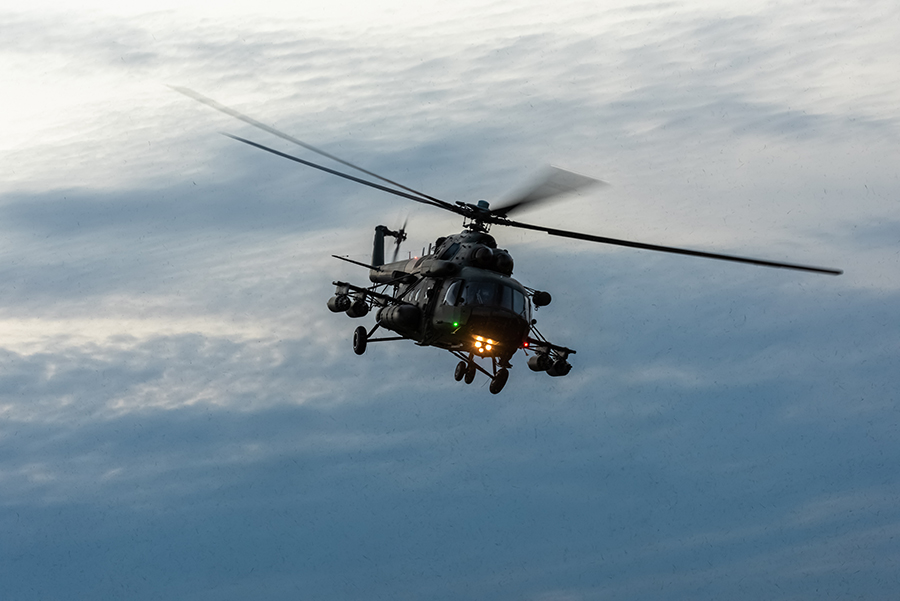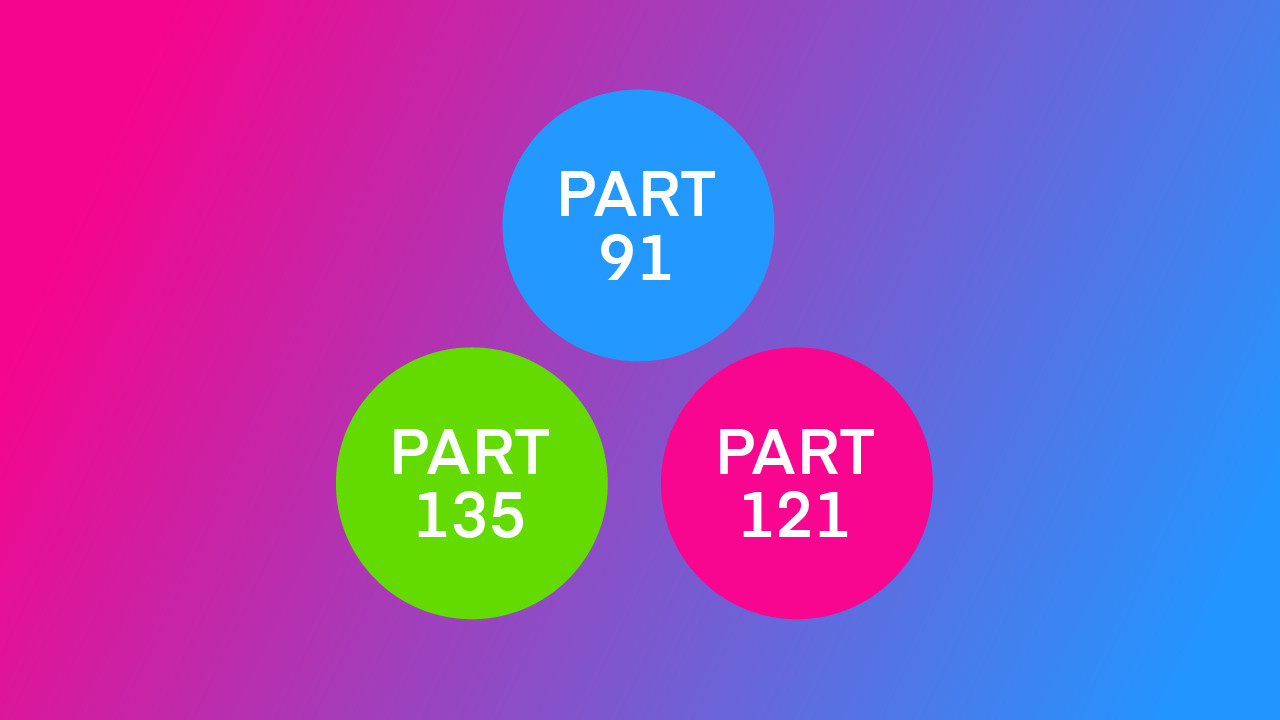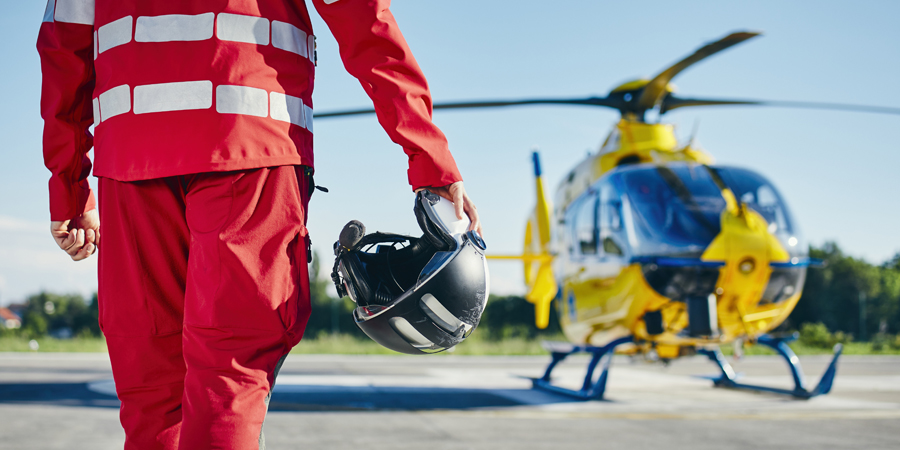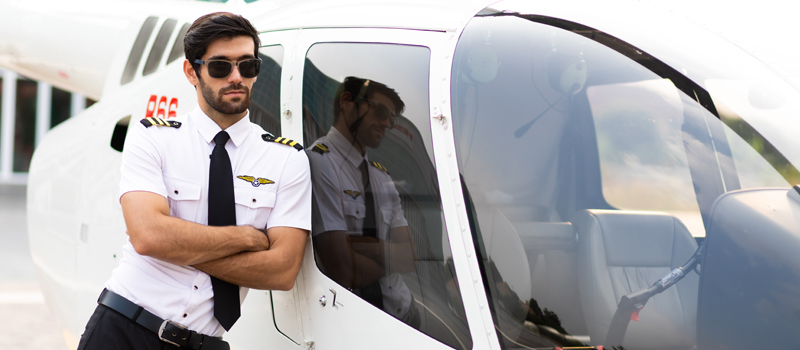-
Qualifications Needed For Helicopter Night Flying
-
My Experiences Of Helicopter Night Flying Training
-
Why Should You Fly Helicopters At Night
-
Jobs Requiring Night Helicopter Flying
- Police Helicopter Pilots
- Air Ambulance Helicopter Pilots
- Corporate And VIP Helicopter Pilots
- Military Helicopter Pilots
-
Conclusion
Many people think that helicopters cannot be flown at night. They might hear and see police helicopters flying around their city when it’s dark, but they assume that these are the only helicopters that are allowed to do so. This is not the case.
Helicopters can definitely be flown at night, even by ordinary Private Helicopter Pilots. Depending on the country you are living in, the pilot may need specific training and a night rating, although this is not the case everywhere. Some countries need you to have certain equipment and instrumentation in your helicopter. And in a few places, it is true that you cannot fly at night in a helicopter at all. But flying helicopters at night can be quite safe and very enjoyable provided certain rules are followed.
However, it takes good training and pilot experience to ensure the helicopter remains safe at all times if you fly it at night. So if you are thinking of doing this, do read on…
Qualifications Needed For Helicopter Night Flying
Not that many private helicopter pilots seem to get a night qualification, or they didn’t back when I got mine anyway. Possibly this is because I got my helicopter night rating in the UK, which has somewhat time-consuming – and therefore expensive – requirements. Applicants for a helicopter night qualification must produce evidence of having achieved 100 hours of flight time in helicopters after the issue of the PPL(H), they must have 60 hours as pilot in command of helicopters, and have done 20 hours of cross-country flight. The night qualification course then consists of five hours of theoretical instruction, ten hours of dual helicopter instrument instruction (in addition to any instrument training completed prior to the course), and five hours of helicopter night training. So it might be clear why not that many private helicopter pilots want to do it. The situation is similar in Canada and some other countries.
However, this is not the case in the US. Here every pilot will complete at least three hours of night flying training during their helicopter Private Pilot training, and they are then allowed to fly a helicopter at night by themself. If the pilot then carries on to train for their commercial pilot certificate, they will do further night training both with an instructor and solo before they can apply for their commercial flight test, but that is all. No separate rating is required.
However, the fact that you are allowed to fly at night, with very little in the way of extra training and experience, does not mean that you should. For a start, you will only learn about flying over cities, using the city lights as your reference. A pilot untrained in flying over unlit areas is likely to be killed in a matter of minutes if he or she leaves the well-lit areas of the city. This is because a few hours of training in night flying does not give you the experience to fly for extended periods using only the helicopter’s instruments as your sole means of figuring out which way is up! Once you have no visible horizon, It is like instrument flying, but perhaps even more difficult. So the pilot will need to have enough instrument flying experience and be in a helicopter that can provide the necessary instrumentation, or they need to be trained and use night-vision goggles once the visual horizon disappears.
My Experiences Of Helicopter Night Flying Training
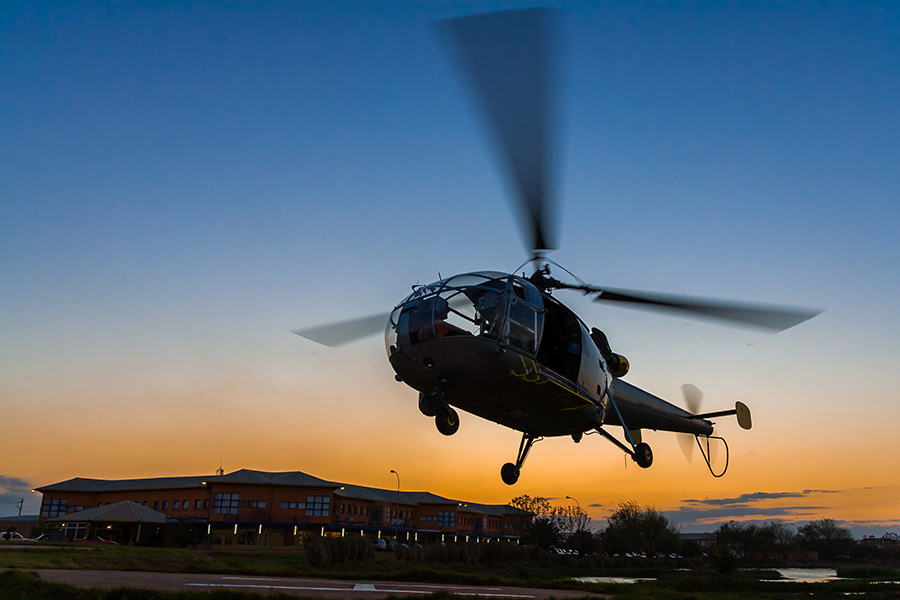
So what is night flying training like? To clarify, it might be most useful for you if I describe my own night flying course, which I undertook many years ago. This might also help to explain why helicopter night flying is so difficult.
Like most private helicopter pilots in the UK, I never quite got around to doing a night qualification. But when I came to do my commercial helicopter training, five hours of night training was required for those of us who had not done it. And that was how I came to get a small amount of night flying experience.
My initial memories of night flying are of just how difficult it was to actually arrange it in the first place! I had done my commercial flying course over the summer, very sensibly, it seemed to me at the time, since we were likely to have long days and better weather. But the long days were the problem when it came to the night flying, of course. It was late September, and still light until long after the airport where I was doing my training was closed for the night. I tried other places but still couldn’t manage to arrange it. So it took until late October before I could actually arrange my night flying training.
On October 24th, according to my log book, I did my first dual night flying sortie. This involved circuits, hovering, and take-offs and landings. Hovering and hover-taxying are night are difficult, as depth perception is affected, and you tend to go too fast. You hover higher than usual, and transitions to forward flight are made using a towering take-off technique. Circuits are pretty much the same as during the daytime, except that you do need to use the instruments quite a lot. The transition to hover involves a constant angle approach and is more difficult than by day as it is hard to assess groundspeed in the dark.
My next session was the following night and was an introduction to navigation. This was not easy, as it was a wild autumn night with high winds and a great deal of cloud. I was taught that you aimed for the lighted areas; if the lights disappeared, that meant there was a cloud and you were about to fly into it. It was surprisingly difficult to judge distance, even of obvious features such as well-lighted towns. I learned a lot, and also quite enjoyed myself despite the weather.
The next two sessions were on emergencies, mainly engine-off landings. The constant attitude autorotation technique is generally used at night, with a speed of 40 knots and little or no flare. However, my main memory is that it is next to impossible to see well enough to select an appropriate landing area. “Turn on the landing light as you approach the ground,” said my instructor. “And if you don’t like what you see…you’d better turn it off again!” He was joking of course!
The next couple of sessions were done from another airport, since my instructor had to be in that area for a day or two, and it provided me with useful experience. We did more circuits, then a cross-country flight over the city center. I remember that well, partly because the lit-up city was so spectacular, but mainly because of the 40-knot winds that night. My instructor ignored my protests. “You’re a commercial pilot now,” he said unsympathetically. “A little thing like wind shouldn’t bother you.” Yes…but we were in an R22, being flung around the sky, not a large, stable commercial helicopter. It was one of the few times when I’ve got slightly airsick even though doing the flying myself!
The final session, back at my original base, involved five required solo circuits, and thankfully the weather had improved. In fact, it was a beautiful night, with fantastic visibility and no wind. It was on the downwind leg, during the second circuit, that I finally realized why so many night-rated pilots waxed ecstatically about night flying – how peaceful things were, how the world looked totally different. It was the first time I had really experienced it for myself, and I didn’t want the session to end. “Only five circuits,” I thought. “It’s not nearly enough”.
That was almost the end of my night flying experience. This was very sad, as I found it really enjoyable being up there in the quiet, dark skies, almost alone. And as a helicopter instructor, although I can theoretically teach my students to fly at night, few of them choose to do it!
Why Should You Fly Helicopters At Night
As a private helicopter pilot, there is no particular reason why you need to fly at night. But as I explained above, it can be most enjoyable. It will also add a new dimension to your flying, and you will acquire a lot of extra knowledge when learning to fly at night. And it could be very useful if you are ever caught out after sunset, as you will have the skills to fly at night, and it will be legal for you to do so.
However, many commercial pilots do actually need to fly at night. Let us take a look at the jobs which are very likely to require the ability to perform night flying.
Jobs Requiring Night Helicopter Flying
The jobs below are probably the main ones where you would need to fly at night, but there may well be others too.
Police Helicopter Pilots
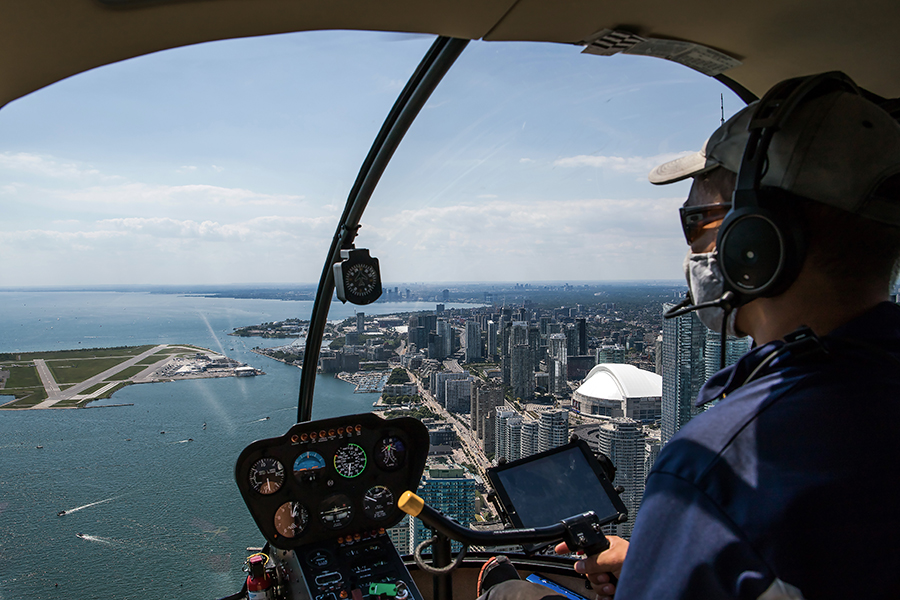
All over the world, police helicopters often fly at night. The bad guys don’t stop operating when the sun goes down! Indeed, in many cities, there is more crime at night, and police helicopters definitely need to be around at that time. They are used both for observation, and sometimes to track and follow suspicious or criminal activity. For these reasons, you may find a police helicopter circling around your house at night. They can cover a very large area of a neighborhood from 1000 feet above, and circling uses a lot less fuel than hovering. It also allows them to stay mobile in case the subject changes direction and it also cuts down on the noise pollution to the residents sleeping below them.
I have been out with police helicopters at various times in my flying career, though not actually handling the controls. Seeing what they do is very interesting. Much of the time they use night vision goggles, but if over a city center it is often not necessary as there is so much light anyway.
Air Ambulance Helicopter Pilots
Air ambulance pilots need to be able to fly at night to ensure a fast response when medical attention is needed. Helicopters help reduce the time needed to transfer a casualty to the hospital or for other medical help, and for some patients, time is the difference between survival and fatality. Accidents and emergencies can happen at any hour of the day or night, so getting medical attention 24/7 is absolutely necessary.
Depending on the country and the local area, the capabilities of the local medevac helicopter can vary dramatically. Some EMS helicopters may only be allowed to operate between lit airports and hospital helipads whereas others may be able to land in the closest park or field even on the darkest nights. The more capabilities the helicopter and crew have the better of course.
Medevac helicopters can be simple single-pilot, single-engine over the city-only operations or be complex, twin-engine, dual-pilot all-weather capable machines.
Corporate And VIP Helicopter Pilots
When wealthy individuals or important companies need to get someone from A to B rapidly, then a helicopter is usually at the top of the list for their transport. A basic helicopter can easily be flown over a well-lit city with very minimal equipment onboard and not much specialist pilot training. But in more challenging conditions, twin-engine, all-weather capable helicopters will be flown, usually by two pilots.
In the winter months when the sun sets early or the passengers are wanting to fly late into the evening, a helicopter can easily be used to fly them from a rooftop helipad, a downtown heliport, or a local airport, to any appropriately prepared landing area. When VIP passengers do not like to wait, a helicopter with the right crew on board can be very lucrative to a helicopter company and in many of large cities, VIP helicopters flying at night is very common.
Military Helicopter Pilots
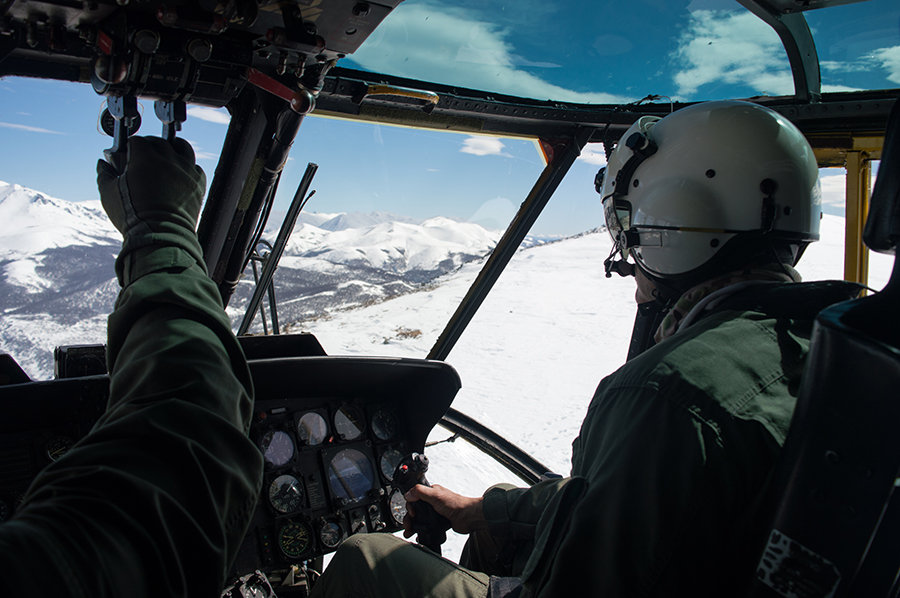
Military helicopter pilots need to be able to fly in all weather and also at night. They undergo regular training to ensure that the pilots have the necessary skills to be able to fly low, fast, and undetected and therefore be ready for wartime operations. Night training will usually be completed in military training areas but flights over cities can often be seen when they are relocating between bases and training facilities.
The art of sneaking up on the enemy is one of the military’s greatest advantages and to do this safely requires extensive training. Most military helicopters will use the latest in night-vision goggle technology and heads-up synthetic vision technology, and they have large amounts of training. For some of the world’s most technologically-advanced military forces, flying at night is not that different from flying during the day, since they do so much of it.
Conclusion
Night helicopter flying is not that common, and not that many private pilots learn to do it. However, it is a useful skill and can be tremendous fun. It is also used extensively in many helicopter careers. So it might be something you would like to consider learning. If so, then happy night flying!
